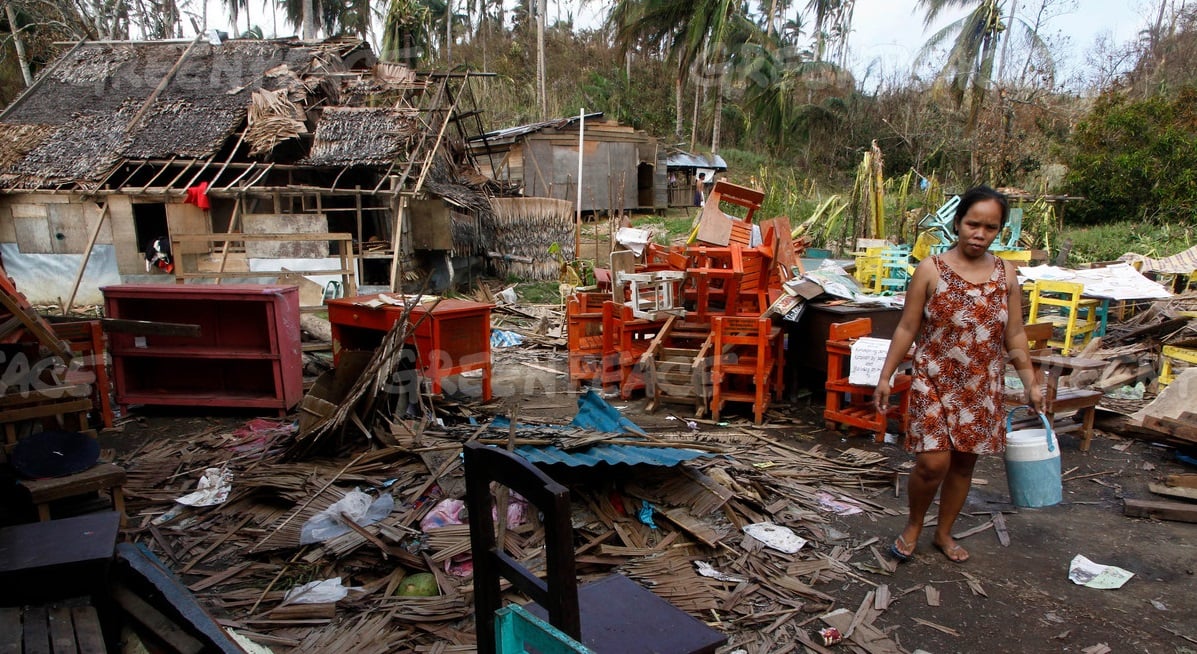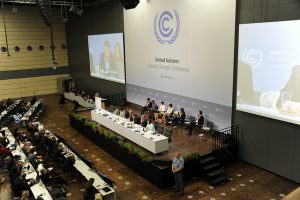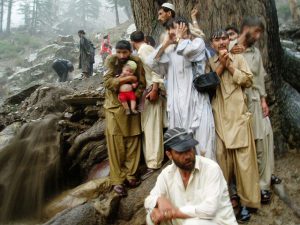Assessing climate risk is urgent but uniquely challenging: it demands an understanding of the complex interactions of global weather systems and the response of natural ecosystems, an assessment of the likely effects of current mitigation policies, and an understanding of the political, social and economic interactions of such factors as forced migration, shocks to global food production, increased violence and state failure.
Those are the findings of a high level report, Climate Change: a risk assessment, published today. The authors, Sir David King (UK), Professor Daniel Schrag (USA), Professor Zhou Dadi and Professor Qi Ye (China) and Dr Arunabha Ghosh (India), call on governments to give climate risk assessment urgent, high-level political attention.Speaking in Delhi last week, Dr Ghosh pointed out that scientists, actuaries, military officers and policy analysts all have a different understanding of risk: scientists are cautious about predicting future climate effects.
Chilling worst-case scenarios
Actuaries and generals, on the other hand, need to plan for worst-case scenarios, which forces them to factor in extreme events. For the report, Dr Ghosh explained, the authors had looked at worst-case scenarios and high emissions trajectories drawn from the same scientific studies that informed the assessments of the Intergovernmental Panel on Climate Change. Looking at the worst-case scenarios led to some frightening perspectives.
On a high emissions pathway, dangerous temperature rises are unavoidable and the probability of crossing thresholds – beyond which the merely inconvenient may become the intolerable – will increase over time. On all but the lowest emissions pathways, a rise of more than two degrees Celsius is likely in the latter half of this century; a medium-high emissions pathway takes us to a likely rise of more than four degrees Celsius by 2150, and on the highest emissions pathway, a rise of seven degrees Celsius is a very low probability at the end of this century, but more likely than not during the course of the next.
The authors detail the likely impacts on human and natural systems, from mass migration to natural disasters. In the case of India, the report forecasts a loss of US$200 billion (1.24 trillion yuan) a year in wheat output from the state of Punjab alone, as plants wilt in the excessive heat just at flowering time. Deaths from heat strokes are also predicted to multiply, as summer temperatures will climb more frequently above 40 degrees Celsius. Already this year, at least 2,000 people have died in heat waves in India and Pakistan.
Climate change will also bring a greatly increased risk of flooding in the Ganges and Indus river basins, as well as in China’s Yellow River basin. “On a high-emissions pathway, what is now a ’30-year flood’ could become three times more frequent in the Yellow River and Indus basins, and six times more frequent in the Ganges basin, over the course of the century,”the report says.
Increasing risk to China
The risks for China are no less severe. The authors believe that the risk of a weather-related shock to global food production is increasing rapidly due to climate change, with serious implications for the stability of the global grain markets on which China increasingly depends to feed its population. According to the Ministry of Finance, in 2013 half of the grain, soybean and meat consumed in China was imported. Chinese agriculture will also face increased impacts from severe weather, with life-threatening extremes of heat in south China and, at higher temperatures, a possible 40% loss of rice production.
Zheng Guoguang, director of China’s National Meteorological Administration, has argued China already suffers annual losses from meteorological events that equate to the value of its annual GDP growth. One-third of these are direct economic losses through such factors as direct damage to cultivated areas, or the loss of fishing craft. The remaining two-thirds are indirect losses through such impacts as forced evacuation or interruptions to manufacturing.
Chinese analysts recognise that longer heat waves, heavy rainfall, drought and typhoons all pose a threat to agriculture, urban management, public health and ecosystems. Some also believe that China’s relative lack of capacity and infrastructure means that the country suffers up to ten times the losses that a developed country such as the United States would suffer from similar events.
The complexity and uncertainty associated with climate change has policy impacts, too. Chinese policymakers not only need to address the domestic challenges arising from climate change, but how climate change helps or hinders China’s growing regional and global cooperation in investment and infrastructure. While the Chinese leadership wants China to play a greater role in global governance, Beijing’s new infrastructure projects with regional neighbours will have to be considered in terms of how they will affect current and evolving low-carbon standards and proposals.
Social and political impacts
The report’s authors explore some potential social and political effects that climate change might trigger. Libya, Jordan, Algeria, Tunisia, Yemen, Egypt and Iraq, they point out, are seven of the world’s top nine wheat-importing countries and. on a per capita basis, spend between 35-45% of their average household income on food. All seven experienced political protests resulting in civilian deaths in 2011, the year food prices spiked because of a global series of harvest failures. Food prices are recognised as one of the factors in the unrest, most notably in Tunisia, Jordan and Yemen. In one study the authors cite, an evaluation of sixty primary studies and forty-five conflict data sets, the likelihood of violence at both personal and international levels was found to increase significantly with climatological changes.
A scenarios exercise enacted for the report also suggested that climate change was most likely to increase the risks of state failure in poor, highly water-stressed or food-insecure states that also suffered social tensions, and poor governance, such as the countries of the Middle East and North Africa. In South Asia, too, economically underdeveloped, resource-stressed, or already unstable countries were highly vulnerable. Drought in Afghanistan and Pakistan, flooding and loss of land to the sea in Bangladesh, could put those countries’ governments under great stress, and precipitate large-scale migration into India, the report points out.
In India, according to vice admiral Pradeep Chauhan (retd) of the Indian navy, quoted in the report, “this would combine with an internal population shift from rural to urban areas, further increasing demographic pressure in cities –many of the largest of which –including Kolkata, Chennai and Mumbai –are coastal, and will be increasingly vulnerable to flooding both from sea level rise and from more intense rainfall. At the same time, both the influx of internal and external migrants, and the increasing variability of the monsoon, could further destabilise the ‘Red Corridor’, a swathe of economic deprivation and misgovernance that cuts through almost all the eastern states of India, in which Marxist-Leninist rebels are waging a campaign of violence against the state.”
Concluding their survey, the authors urge governments to prioritise climate risk assessment, better to understand and to plan for the future pathway of global emissions; the direct risks arising from the climate’s response to those emissions; and the risks arising from the interaction of climate change with complex human systems.







